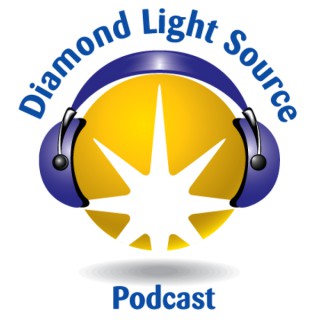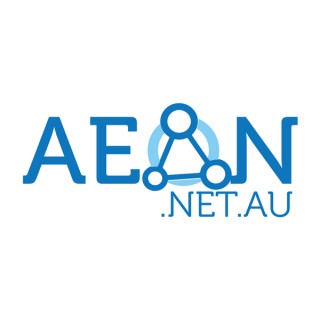Podcasts about beamline
- 9PODCASTS
- 15EPISODES
- 29mAVG DURATION
- ?INFREQUENT EPISODES
- Mar 4, 2024LATEST
POPULARITY
Best podcasts about beamline
Latest news about beamline
- Three teams of secondary school pupils from the Netherlands, Pakistan and the USA win the 10th edition of Beamline for Schools News for general public feed - Jun 27, 2023
- Argonne Opens New APS Long Beamline Building HPCwire - Jul 26, 2022
Latest podcast episodes about beamline
Saving Pandas (and the Planet) with Jana Budkovskaja from Beamline
With international actions on halting climate change showing no signs of progress, the mission to save the planet and the environment has been left to startups, said Jana Budkovskaja, the head of Beamline Accelerator. "That's why I'm here — because I truly believe that these are the only ones who can save, only startups. All the, in a good way, crazy guys who don't believe that something is impossible. They have passion. They have ideas. These are the scientists, these crazy scientists, the ones who argue with obvious things, the ones who argue with corporations who say, but we have done like this," Budkovskaja said in the episode. Beamline is a Tallinn-headquartered accelerator working with pre-seed and seed-stage cleantech startups across Europe. We covered a wide range of topics ranging from pandas and climate change to greenwashing. What is cleantech? How does it differ from greentech? Beamline invests in teams and provides them with a 3-6 month program and an alumni club. Beamline's current batch is focused on deep tech and material science and uses non-equity money from Estonia's Ministry of Climate. Jana shared her personal journey into the cleantech sector, starting from her love for nature and animals as a child. In Kiikla, Mäetaguse abandoned mines are used as a renewable energy source for heating a village. Beamline aims to be a bridge between the startups and the policymakers, governance, and corporates, who have a high level of inertia and resistance to change. The future challenges with growing the fund, accelerator and the alumni club of Beamline.
Con il progetto EXTRA 13 studenti del Liceo Scientifico A.Scacchi di Bari hanno vinto il concorso "Beamline for schools" del CERN
Berliner SchülerInnen gewinnen bei "Beamline for schools"
Sieg für die Berliner SchülerInnen des Werner-von-Siemens-Gymnasiums. Sie überzeugten mit einem physikalischen Experiment die Jury des Beamline-for-schools-Wettbewerbs und wurden eingeladen, am Hamburger Forschungszentrum DESY ihr Experiment durchzuführen. Wissenschaftsredakteur Thomas Prinzler hat sich das erklären lassen.
Learn more about an international science competition for high school students, where they can propose an experiment, which can be performed using a particle accelerator. Since 2014 CERN has run the Beamline for Schools competition, where winners are invited each year for two weeks with full cost covered to perform their proposed experiments together with professional scientists at CERN's world-class particle physics laboratories. Hosted by Ben Newsome from Fizzics Education About the Beamline for Schools Competition BL4S The competition is open to teams of high-school students from all around the world who, if they win, are invited (with up to two adult team coaches) to DESY to run their experiment. It all about being creative and designing an experiment that will have impact and can be run at on a real particle accelerator! https://beamlineforschools.cern/bl4s-competition/about About the FizzicsEd Podcast Hosted by Ben Newsome from Fizzics Education With interviews with leading science educators and STEM thought leaders, this science education podcast is about highlighting different ways of teaching kids within and beyond the classroom. It's not just about educational practice & pedagogy, it's about inspiring new ideas & challenging conventions of how students can learn about their world! https://www.fizzicseducation.com.au/ Know an educator who'd love this STEM podcast episode? Share it! The FizzicsEd podcast is a member of the Australian Educators Online Network (AEON ) http://www.aeon.net.au/ See omnystudio.com/listener for privacy information.
Learn more about an international science competition for high school students, where they can propose an experiment, which can be performed using a particle accelerator. Since 2014 CERN has run the... Want to learn about teaching and education in Australia?
Abbiamo chiamato Carlotta Negri, Caterina La Porta e Stefano Zapperi per parlare con la prima del suo articolo sui PNAS e, con gli altri due, delle gioie e i dolori dell'interdisciplinarità. Sylvie è a Palermo per il simposio "E possibilmente anche dopo" a 40 anni dalla pubblicazione de "La scomparsa di Majorana" di Sciascia. In collegamento telefonico ci spiega come si sta evolvendo l'evento. Chiudiamo con una segnalazione su Beamline for School 2016.
Abbiamo chiamato Carlotta Negri, Caterina La Porta e Stefano Zapperi per parlare con la prima del suo articolo sui PNAS e, con gli altri due, delle gioie e i dolori dell'interdisciplinarità. Sylvie è a Palermo per il simposio "E possibilmente anche dopo" a 40 anni dalla pubblicazione de "La scomparsa di Majorana" di Sciascia. In collegamento telefonico ci spiega come si sta evolvendo l'evento. Chiudiamo con una segnalazione su Beamline for School 2016.
Le Oche sono tornate ai microfoni di RadioPopolare. Con loro arrivano le principali notizie della settimana ed un'intervista ai ragazzi del liceo scientifico Leonardo Da Vinci di Firenze. Hanno vinto la competizione indetta dal CERN "A Beamline for Schools" guadagnandosi un soggiorno a Ginevra per completare il proprio progetto. Ne abbiamo parlato con loro e con la professore Manuela Lima.
Le Oche sono tornate ai microfoni di RadioPopolare. Con loro arrivano le principali notizie della settimana ed un'intervista ai ragazzi del liceo scientifico Leonardo Da Vinci di Firenze. Hanno vinto la competizione indetta dal CERN "A Beamline for Schools" guadagnandosi un soggiorno a Ginevra per completare il proprio progetto. Ne abbiamo parlato con loro e con la professore Manuela Lima.
Looking into the Light! - Diamond Podcast - 11.09.19
This month we look into the light to discover how Diamond's new Imaging and Coherance beamline is helping scientists see with greater clarity than ever before! We hear how the beamline works to provide greater resolution imaging, how rocks deep beneath the earths surface can be analysed for potential storage of carbon dioxide in the future, and how imaging the internal structure of metal alloys could help recycle them on a greater scale. Plus, the latest news and events from Diamond including new eye-opening research on the cornea and the family history of the virus!
This month we look into the light to discover how Diamond's new Imaging and Coherance beamline is helping scientists see with greater clarity than ever before! We hear how the beamline works to provide greater resolution imaging, how rocks deep beneath the earths surface can be analysed for potential storage of carbon dioxide in the future, and how imaging the internal structure of metal alloys could help recycle them on a greater scale. Plus, the latest news and events from Diamond including new eye-opening research on the cornea and the family history of the virus! Like this podcast? Please help us by supporting the Naked Scientists
Looking into the Light!
This month we look into the light to discover how Diamond's new Imaging and Coherance beamline is helping scientists see with greater clarity than ever before! We hear how the beamline works to provide greater resolution imaging, how rocks deep beneath the earths surface can be analysed for potential storage of carbon dioxide in the future, and how imaging the internal structure of metal alloys could help recycle them on a greater scale. Plus, the latest news and events from Diamond including new eye-opening research on the cornea and the family history of the virus! Like this podcast? Please help us by supporting the Naked Scientists
This month, we venture into the synchrotron along with members of the public to bring you a glimpse of the Inside Diamond open days. We meet the engineers and technicians that design the components of the synchrotron to keep it running smoothly, hear from Diamond CEO Gert Materlik about the main highlights of these open days. Plus, we talk to a scientist working on one of Diamonds latest Beamlines, I-24, that's enabling research that wasn't possible before including new insight in the fight against allergies!
This month, we venture into the synchrotron along with members of the public to bring you a glimpse of the Inside Diamond open days. We meet the engineers and technicians that design the components of the synchrotron to keep it running smoothly, hear from Diamond CEO Gert Materlik about the main highlights of these open days. Plus, we talk to a scientist working on one of Diamonds latest Beamlines, I-24, that's enabling research that wasn't possible before including new insight in the fight against allergies! Like this podcast? Please help us by supporting the Naked Scientists
This month, we venture into the synchrotron along with members of the public to bring you a glimpse of the Inside Diamond open days. We meet the engineers and technicians that design the components of the synchrotron to keep it running smoothly, hear from Diamond CEO Gert Materlik about the main highlights of these open days. Plus, we talk to a scientist working on one of Diamonds latest Beamlines, I-24, that's enabling research that wasn't possible before including new insight in the fight against allergies! Like this podcast? Please help us by supporting the Naked Scientists












